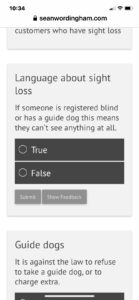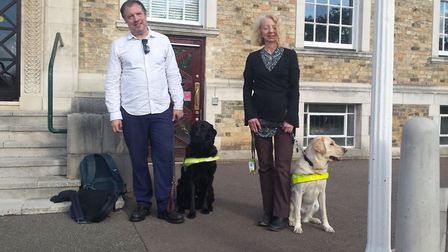- Responsibilities: Instructional Design, eLearning Development
- Target Audience: Taxi/Uber drivers
- Tools Used: Evolve authoring tool
- Budget: £0
- Year: 2021
Learning objectives
By the end of the course the participants will be able to:-
- identify their legal obligations to passengers with sight loss
- choose useful language for communicating with visually-impaired passengers
- adopt the correct procedures for helping passengers with sight loss
Background
In a one-year period, 42% of assistance dog owners were refused entry to a taxi or minicab because of their dog, while 20% of assistance dog owners said that a minicab or taxi arrived but the driver drove off without even speaking to them.
Guide Dogs UK has been lobbying the government for years to require Disability Equality Training for the drivers of taxis and minicabs. My plan is to make a free mini-course, suitable for mobiles, and try to get it to taxi firms so in order to make it as easy and cost-free as possible for them to add it to the training their drivers already do.
Design Process
Preparation
Guide Dogs UK have a great website, which includes a page on useful advice for taxi drivers.
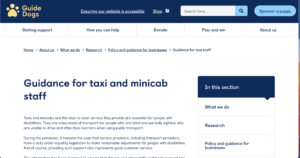
I used the guidance there for the learning objectives, topics to be covered and questions. I wrote the feedback based on this and my experience of having spoken to guide dog owners and others with sight loss.
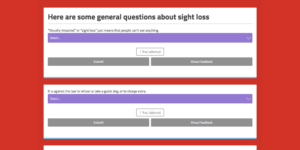
This was the original look of the course. I was not happy with the colours or the full-width questions so I changed it to half-width questions which would make sense on a computer screen, but would work best on a mobile phone.
Talking to the SME
Once I had a prototype I sent it to my brother, who is a guide dog owner, and posted it in a Facebook group for members of the RNIB. They made the following points:-
- the main point of confusion for visually-impaired people is the the word “blind”
- people often talk “over” the person with sight loss
- the colour scheme was not ideal for visually-impaired people
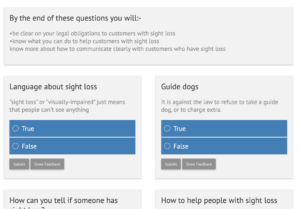
Important considerations after consultation
- I changed the first question to be about the word “blind” – explaining that in facet most “blind” people can see something.
- In the scenario I included a sighted person who had helped the passenger and gave the option to talk to them, along with feedback about why this would be a bad idea.
- I changed the colour scheme to black and white for maximum contrast.
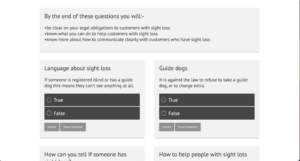
This is what the course looks like on a mobile phone:-
